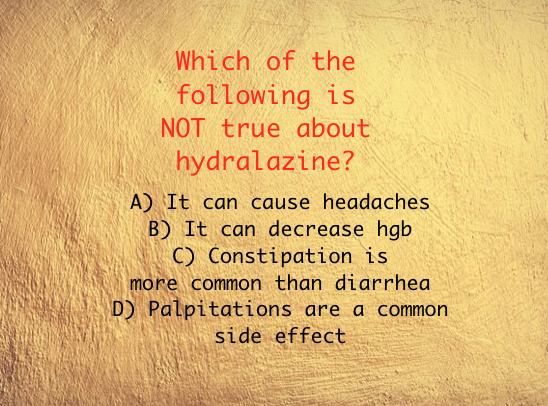1. Call The provider names like “honey”, “sweetheart”, “hun”
- This can come off very demeaning
- It can come off sexist
- Providers do like to be asked “what would you like to be called” (Doctor, NP, etc..)
2. Demanding antibiotics
- It is never a good idea to demand anything from a provider.
- Antibiotics are not for every condition. Some conditions are self-limiting and do not need antibiotics. In fact, taking an antibiotic may even cause additional undesired symptoms.
- Suggestions can sometimes be helpful. Especially if the patient is saying what has worked in the past when they had a similar diagnosis.
- Demanding is never usually helpful. In fact, it may make the provider more defensive and/or hesitant. This is especially the case if they feel that the patient is “drug seeking”.
- Allow the provider to do their job. It is what the have been trained and experienced to do.
3. Avoid giving the provider several unrelated issues to workup in one exam
- This is an important one for many reasons.
- If you have ever had a PCP visit and had to wait an hour-this might be the reason why.
- For most regular visits, there is a specific time allotted for each patient (typically 15-20 minutes depending on clinic, more time usually given for new patients and wellness visits).
- Each of those slots are filled with patients. So when one person adds additional issues into the visit-this creates a domino effect for patient wait times.
- Providers are human, however, they are often expected to do things that are not humanly possible. Like see 35 patients in an eight hour day, skip lunch, skip bathroom breaks, review labs and tests, etc. It can be too much and often leads to provider burn out. There is already a shortage of primary care provider. Burnout has the potential to create even longer wait times for patients. A provider cannot just be made in a day. Provider training takes years. And the credentialing process at certain facilities can takes months.
- Take into consideration that if you are seeing the provider between 12-1pm it is likely that provider is skipping their lunch. Providers do this so that you don’t have to wait an even longer amount of time.
- If a patient brings in a laundry list of issues, it becomes difficult to be completely thorough.
- Many issues need more than one visit to identify a diagnosis and develop a proper treatment plan.
- Risk for error increases when too many unrelated issues are given in one exam. Now in some instances patients aren’t always sure which symptoms are related. In that case it is perfectly fine to mention additional symptoms. But all too often this is not the case. Sinus infection, medication refills, mole on thigh, lower back pain, ear wax removal is an example of a visit that is a little too much for one visit.
- Typically 3 problems is the max. One problem is preferred. If 3 problems are given there should be one main and the other 2-3 should be very minor issues.
4. The provider is not a complaint department
- Some patients will spend the majority of their visit complaining about scheduling issues and or billing issues. Although these issues are often understandable sources of frustration, discussing them in-depth takes away time from the actual purpose of the visit.
- The providers are typically busy seeing patients the entire day. They often do not get any breaks in between patients. Their time must be used wisely. This is why it is so important that the time within the patient appointment be used specifically for the purpose of the visit. That visit is essentially the patient’s hard earned money. If nothing gets accomplished in the 10-15 minute appointment…more visits will likely be needed.
- It’s important to direct the complaints to the correct place (example: office manager)
5. Tell them your life story
- Because the provider only has so much time for each visit, adding unnecessary details to the visit only takes away from the purpose of the visit
- It is important to build rapport; that builds trust. However, it is also important to realize that certain details do not add any value to the history and physical. It actually wastes precious time. It may leave less time to discuss your actual problems
6. Touch the Provider
- It is important to understand that is never appropriate to touch a provider.
- Providers should also always be asking the patient if it is ok to auscultate or palpate lung, abdomen, etc. This is a sign of respect and understanding that you are getting permission to examine a patient
- Patients are not there to examine the provider.
- Fist bump, hand shakes, side hugs may be appropriate in some cases. However, caution must still be taken to avoid any misunderstanding and/or unnecessary uncomfortable situations.
7. Tell the provider that you have fired or are going to sue another provider
- This may actually cause your current provider to become more guarded.
- It does not help to establish trust during the visit.
- The provider may focus more on the process of charting than the patient
- Unnecessary tests and medications may be used in order to “please the patient”. This is sometimes done to avoid conflict. But it can increase the potential for unnecessary adverse reaction and wasted money.
8 . Missed appointments–no call, no show
- Many offices have a “3 strikes you are out” policy. Which means that you can no longer be seen at that practice.
- Providers do understand that life events happen. However, when there is a pattern it becomes obvious that there is a disrespect for the provider’s time.
- Many patients wait months for a visit. When another patient misses a visit, the slot often goes unfilled. That could have been an opportunity for another patient to be seen.
- This can appear as a form of noncompliance.
- Certain labs and tests may need to be performed to assure that the medications are not causing any issue in the body (liver, blood, electrolyte, renal issues).
9. Answer your phone during a visit
- This is a big no no!!
- If you are concerned that your family won’t know where you are-it might be a good idea to let them know where you will be before you go to your visit.
- Many providers will walk out of the room and go to another patient if this is done.
- It is rude. Can you imagine a provider answering their phone during a visit?




